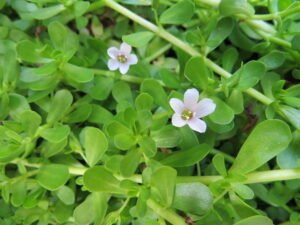How To Plant, Grow, And Care For Crepe Myrtle Trees

Crepe Myrtle Tree
Crepe Myrtle trees, scientifically known as Lagerstroemia, are renowned for their stunning blooms and attractive bark. These deciduous trees are native to Asia and are widely cultivated for their ornamental value. This article explains in detail how to plant, grow and care for Crepe Myrtle trees.

The scientific name of Crepe Myrtle trees is Lagerstroemia. Within this genus, there are several species, including Lagerstroemia indica, Lagerstroemia speciosa, and Lagerstroemia fauriei. Each species has its own unique characteristics and growth habits, but all share the iconic crepe-like flowers that give these trees their common name.
Facts About Crepe Myrtle Trees
In addition to their scientific name, Crepe Myrtle trees are known by various common names. These names often reflect the tree’s appearance or cultural significance. Some of the popular common names for Crepe Myrtle trees include “Crepe Myrtle,” “Crape Myrtle,” “Lilac of the South,” and “Indian Lilac.”
Crepe Myrtle trees have a long blooming season, typically from late spring to early fall. This extended period of blooming ensures that you can enjoy their beautiful flowers for a significant part of the year. It’s a great way to bring color and life to your garden throughout the warmer months.
Crepe Myrtle trees are known for their ability to tolerate drought conditions. Once established, they can withstand periods of dry weather without requiring excessive watering. This makes them a low-maintenance option for gardeners who want a beautiful tree without the need for constant watering.
Crepe Myrtle trees are not only visually appealing but also attract various forms of wildlife. The colorful blooms attract butterflies, bees, and other pollinators, making them a valuable addition to any pollinator garden. Additionally, the tree’s berries provide food for birds, adding to the biodiversity of your outdoor space.
Crepe Myrtle trees come in various sizes and shapes, ranging from small shrubs to tall trees. This versatility makes them suitable for a wide range of landscapes, whether you have a small backyard or a spacious garden. You can choose the right size and shape to fit your specific needs and preferences.
FAQ About Crepe Myrtle Trees
Can I grow a crepe myrtle tree in a container?
Yes, it is possible to grow a crepe myrtle tree in a container, but it’s important to choose a dwarf or compact variety that is suitable for container gardening. Make sure the container is large enough to accommodate the tree’s roots, and use a well-draining potting mix. Regular watering and fertilization are crucial for container-grown crepe myrtle trees.
When to prune crepe myrtle?
The best time to prune your crepe myrtle is during late winter or early spring, just before new growth begins. This is typically between February and early March, depending on your location and climate. Pruning during this dormant period allows the tree to recover and promotes healthy growth in the upcoming season.
Right Location For Crepe Myrtle Trees
Before you start planting your crepe myrtle tree, it’s important to choose the right location. Crepe myrtles thrive in full sunlight, so make sure to select a spot in your garden that receives at least six to eight hours of direct sunlight each day. Additionally, crepe myrtles prefer well-draining soil, so avoid areas that are prone to standing water.
It’s also important to consider the size of the crepe myrtle tree at maturity. Make sure to choose a location that allows enough space for the tree to grow and spread its branches without obstruction. Keep in mind that crepe myrtles can reach heights of up to 20 feet and have a spread of 10 to 15 feet.
How To Plant Crepe Myrtle Tree
Once you have chosen the perfect location, it’s time to plant your crepe myrtle tree. Follow these steps for successful planting:
- Prepare the soil: Dig a hole that is twice as wide and just as deep as the root ball of the tree. Loosen the soil in the hole to ensure good root penetration.
- Place the tree: Carefully remove the crepe myrtle tree from its container and gently loosen the roots. Place the tree in the center of the hole, making sure that the top of the root ball is level with or slightly above the surrounding soil.
- Backfill the hole: Insert the excavated soil into the hole, gently compacting it around the roots. Make sure not to bury the trunk of the tree.
- Water thoroughly: After planting, water the tree thoroughly to settle the soil and remove any air pockets. Keep the soil consistently moist, but not waterlogged, during the first few weeks of growth.
How To Care For Crepe Myrtle Tree
Watering and Fertilizing
Proper watering is essential for the health and growth of your crepe myrtle tree. Here are some watering tips:
- Establishment period: During the first year after planting, water your crepe myrtle tree deeply once a week. This will aid in the roots’ settling into the ground.
- Mature trees: Once your crepe myrtle tree is established, it is generally drought-tolerant and only requires watering during prolonged dry periods. Use a deep watering technique so that the water reaches a minimum of 6 inches down into the soil.
- Fertilizing: Crepe myrtle trees do not require heavy fertilization. In fact, excessive fertilization can lead to excessive vegetative growth and fewer flowers. Apply a balanced slow-release fertilizer in early spring, following the manufacturer’s instructions.
Pruning and Maintenance
An essential part of caring for crepe myrtle trees is pruning. Proper pruning helps maintain the tree’s shape, promotes healthy growth, and encourages abundant flowering. Here are some guidelines for pruning your crepe myrtle tree:
- Timing: Prune your crepe myrtle tree during late winter or early spring, before new growth begins. Avoid pruning in late summer or fall, as this can stimulate new growth that may be damaged by frost.
- Remove suckers: Crepe myrtle trees are prone to producing suckers, which are shoots that emerge from the base of the tree. These suckers should be promptly removed to maintain the tree’s appearance and prevent the growth of multiple trunks.
- Thin out branches: Thin out crowded branches to improve air circulation and sunlight penetration. This will help prevent diseases and promote healthier growth.
- Remove dead or damaged wood: Prune away any dead or damaged branches to maintain the overall health and appearance of the tree.
Pest and Disease Control
Crepe myrtle trees are generally resistant to pests and diseases. They may, however, occasionally be impacted by specific problems. The following are some common diseases and pests to be aware of:
- Aphids: These small insects feed on the sap of the tree and can cause leaf curling and distortion. Use a strong stream of water or insecticidal soap to control aphid infestations.
- Powdery mildew: Powdery mildew is a fungal disease that can affect the leaves of crepe myrtle trees, causing a white powdery coating. Ensure good air circulation around the tree and consider using a fungicide if the problem persists.
- Scale insects: Scale insects are small, oval-shaped pests that attach themselves to the branches and leaves of the tree. Insecticidal soap or horticultural oil can be used to control them.
By following the guidelines outlined in this guide, you can successfully plant, grow, and care for a beautiful crepe myrtle tree in your own garden. Remember to choose the right location, provide proper watering and fertilization, prune as needed, and watch out for any pests or diseases. With a little care and attention, your crepe myrtle tree will reward you with stunning flowers and vibrant colors for years to come.





